Reading Sanfey’s The Neural Basis of Economic Decision-Making in the Ultimatum Game, got me interested in the link between decision making and architecture. I designed different architectural schemes based on the concept of choice that can be incorporated in any space at any scale. These spaces can be used for possible experiments with choice and space. I think architecture and space can manipulate people and although some of these schemes are really simple, they make people think more about the choices they are make. Some of the other concepts I am playing with are illusion, flexibility, altruism and deception.
Course: Psychobiology of Emotion
Project Duration: 2 Weeks
Completed: May 2013
In Sanfey’s article Social Decision-Making: Insights from Game Theory and Neuroscience, he stresses the importance of human interaction as a factor that influences people’s decisions. “Research has already begun to illustrate how social exchange can act directly on the brain’s reward system, how affective factors play an important role in bargaining and competitive games, and how the ability to assess another’s intentions is related to strategic play”.
“Although relatively understudied, these social situations offer a useful window into more complex forms of decisions, which may better approximate many of our real-life choices”. Including some kind of social exchange before or during the experiment can possibly alter the results of the experimentation.
Scheme A experiments with space and the Ultimatum Game looking at alterations to an existing scheme (A-1). Scheme B, C and D are different in the sense that they look at choice a little more philosophically.





